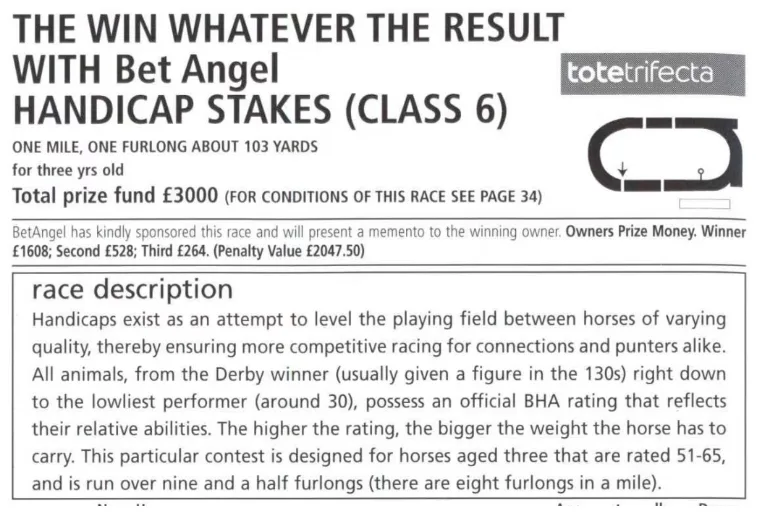
Understanding Codes and Classes in Horse Racing
Horse racing isn’t just “one sport” – it’s a patchwork of codes (the type of racing) and classes (the quality of each contest). Knowing where a race sits in this hierarchy helps you judge form, spot value, and create smarter trading strategies. Below is a clear guide you can paste straight into your WordPress Gutenberg editor.
Why Codes and Classes Matter
Codes tell you the kind of race you’re looking at (flat, jump, all‑weather). Classes tell you the standard of those runners. Match the two and you suddenly understand why a Tuesday evening Class 6 handicap at Wolverhampton looks worlds apart from a Saturday Group 1 at Ascot.
The Main Codes of UK Racing
Flat Racing
- Season: Late March – Early November (turf)
- Surface: Grass; speed emphasised over stamina
- Distances: 5 furlongs to 2 miles 5 furlongs
- Notable meetings: Royal Ascot, Guineas Festival, Ebor Festival
All‑Weather Racing
- Season: Year‑round
- Surface: Synthetic (Tapeta, Polytrack, Fibresand)
- Distances: Same range as turf flat racing
- Role: Keeps horses fit through winter; often lower‑grade handicaps but hosts important qualifiers for the All‑Weather Championships
National Hunt (Jump) Racing
- Season: Late September – April (core), but now almost year‑round
- Categories:
- Hurdles: Smaller, more flexible obstacles
- Steeplechases: Larger, more demanding fences
- Bumpers: Flat races for future jumpers
- Distances: 2 miles to 4 ½ miles
- Showpieces: Cheltenham Festival, Grand National, King George VI Chase
Race Classes Explained
Class is numbered 1 to 7 (Flat) and 1 to 6 (National Hunt). Class 1 contains the very best; the higher the number, the lower the level.
Class 1 – Pattern & Graded Races
- Flat: Group 1, Group 2, Group 3, Listed
- Jumps: Grade 1, Grade 2, Grade 3, Listed
- Feature races with high prize‑money and strict entry conditions.
Class 2
- High‑quality handicaps (ratings roughly 86‑100+) or novice/conditions races.
Class 3
- Solid mid‑tier handicaps (ratings 76‑90) and better novice events.
Class 4
- Everyday handicaps (ratings 66‑80) and maiden/novice races.
Class 5
- Lower‑grade handicaps (ratings 56‑70) and entry‑level novice races.
Class 6
- Bottom‑rung handicaps (ratings 46‑60). Often the starting point for cheap or lightly‑raced horses.
Class 7 (Flat only)
- Rare, lowest official level (ratings 0‑45). Think sellers and classified stakes.
Weight‑for‑Age, Handicaps & Ratings
- Weight‑for‑Age (WFA): Levels the playing field between younger and older horses in classy races.
- Handicaps: Each horse is allocated weight by the handicapper based on Official Rating (OR). The aim is a blanket finish – although smart bettors know that’s theory, not reality.
- Ratings Bands: Define which class a horse can enter; ratings rise or fall after each run.
Spotting Quality: Group & Graded Labels
| Code | Tier | Example | What It Means |
|---|---|---|---|
| Flat | Group 1 | 2000 Guineas | World‑class, WFA, no handicaps |
| Flat | Group 2 & 3 | Lennox Stakes | Still elite but a notch below |
| Jumps | Grade 1 | Cheltenham Gold Cup | Top‑class, level weights apart from WFA |
| Jumps | Grade 2 & 3 | Coral Cup | Quality contests, some penalties |
| Both | Listed | Rosebery Hcp | Just outside pattern/graded sphere |
How a Horse Progresses Through the Classes
- Starts in a Maiden or Bumper – wins/places and earns a rating.
- Graduates to Handicaps – rating rises with success.
- Breaks 100+ (Flat) or 140+ (Jumps) – targets valuable Class 2’s or Class 1’s.
- Proves Group/Grade calibre – competes at pattern level, possibly internationally.
Practical Tips for Bettors & Traders
- Compare last race class to today’s: Dropping from Class 2 to Class 4 often signals intent.
- Check strength in depth: A weak Class 2 may be easier than a hot Class 3.
- Track Ratings Momentum: Horses climbing the ranks quickly can be underrated in early Class jumps.
- Beware first‑time jumpers switching codes: Flat speed isn’t always an asset over fences.
- Use sectional timing on the All‑Weather: Consistent surface makes it easier to profile speed figures.
Key Takeaways
- UK racing splits first by code (Flat, All‑Weather, National Hunt) and then by class (1‑7).
- Class 1 houses Group/Grade races – the sport’s pinnacle.
- Understanding where a horse sits on this ladder lets you spot overpriced runners and make sharper trading decisions.
- Always marry class context with form, ground, and pace to get the full picture.
Master the code‑and‑class matrix, and you’ll read a racecard with the same instant insight as professional handicappers – giving you a critical edge before the market moves.
